- Home
- Sylvia Plath
The Letters of Sylvia Plath Volume 1 Page 2
The Letters of Sylvia Plath Volume 1 Read online
Page 2
Following the appearance of her short story ‘And Summer Will Not Come Again’ (Seventeen, August 1950) and weeks from matriculating at Smith College, Plath received her first fan letter from Edward Cohen of Chicago. In one of her replies, Plath provided a self-portrait as a nearly eighteen-year-old:
Maybe you don’t know how it is not to be accepted in a group of kids because you’re just a little too individual. Shyness, in their terminology is conceit, good marks signify the horror of horrors . . . a brain. No doubt this all sounds oozingly pathetic, but it’s one of the reasons that I’m the way I am. I’m sarcastic, skeptical and sometimes callous because I’m still afraid of letting myself be hurt. There’s that very vulnerable core in me which every egoist has . . . and I try rather desperately not to let it show.
(11 August 1950)
Of the eighty-five collected letters written during her first semester at Smith College, all but two are to her mother. An additional sixty-six letters were sent to Wellesley between January and May of 1951. The result is a nearly uninterrupted narrative of her first year away from home. That spring, Plath also sent eight letters to her good friend Ann Davidow-Goodman Hayes, who did not return to Smith after the first semester. These letters to Ann, as well as to her other lifelong friend Marcia Brown Stern, span both volumes and provide a glimpse of the strong bonds Plath made with her classmates.
Many of Plath’s journal entries at the start of her college years are undated. To the contrary, Plath’s letters were either meticulously dated by her or have been assigned dates by the present editors. This may allow those journal passages with no dates to be identified. For example, Plath’s undated journal entry 45 recounts ‘Another blind date. This one is older.’ She provided a more staid version of the evening in a letter written to her mother on 3 December 1950. Journal entry 64 contains ‘Notes on an experimental film’, which was Un Chien Andalou directed by Luis Buñuel and Salvador Dali. Plath wrote to her mother on the night of 10 April 1951: ‘Saw a brief Dali shock movie – my one free act for the rest of the year.’ This exercise may lead to a ripple effect, forwards and backwards, of being able to date additional journal entries.
There are no journals from autumn 1953 to autumn 1955. Publishing Plath’s letters from this period fills an autobiographical void and offers first-hand accounts of her life from readmission to Smith College in 1954 to her departure for Britain in September 1955. The letters to Gordon Lameyer, Philip McCurdy, her mother, Richard Sassoon, and Jon Rosenthal, for example, establish her successful re-immersion in both academic and social life. Plath always took her studies and writing seriously, but she regularly travelled to Boston, New York, and New Haven for dates and cultural events. Hungry for new experiences because they encourage ‘personality adjustments’, she challenged her own comfort in numerous ways such as taking a two-seater plane flight and adjudicating a high-school writing contest. In her last semester at Smith, Plath enrolled in a special studies course, ‘The Theory and Practice of Poetics’, and produced ‘a “batch” of poems weekly’, amounting to more than fifty new works (9 January 1955).
While her goal was still to appear in the New Yorker, by the time she graduated Smith on 6 June 1955 Plath’s poetry was appearing in major American publications such as Harper’s and the Atlantic Monthly. She had made the acquaintance of famous writers and poets, too, among them Elizabeth Bowen, and W. H. Auden, and Marianne Moore, who offered advice and support. With nearly a decade of experience to this point, Plath was practical in her approach to submitting her work and handling either acceptance or rejection. When she arrived in Britain she was presented with a new market of periodicals to which to offer her work and a different audience of readers. While still submitting poems to American journals, Plath quickly tried magazines based in London, Oxford, and Cambridge. She maximized exposure by publishing her work in Britain and America. For example, ‘Epitaph for Fire and Flower’ was published simultaneously in Cambridge’s Chequer (Winter 1956–7) and Chicago’s Poetry (January 1957).
In her first term at Newnham College, Cambridge, Plath joined the Amateur Dramatics Club, performing in a small ‘nursery’ production and in the big autumn performance of Bartholomew Fair. To Marcia Brown Stern, Plath wrote about the many possible groups and activities open to students: ‘there are clubs for everything from puppetry to piloting, communists to heretics, wine tasters to beaglers! Indifference is the cardinal sin’ (c. 14 December 1955).
Plath spent her Christmas 1955 break from Newnham on the continent, in Paris and Nice, with Richard Sassoon. Upon her return to Cambridge, Sassoon abruptly ended their relationship. Plath was not short of male attention (she wrote to her mother that there were ‘10 men to each woman!’), but Sassoon’s departure disturbed her. She sent Sassoon a number of letters that winter and thoughtfully transcribed excerpts into her journals. Although printed in the Journals of Sylvia Plath (Faber, 2000), these excerpts appear in this volume to lend documentary force and context in the storyline of her spring 1956 correspondence.
On 25 February 1956, Plath wrote to her mother that ‘it is a new day: bright, with sun, and a milder aspect’ and notified her that she was ‘going to a party celebrating the publication of a new literary review’. The following week, Plath wrote again to her mother:
Met, by the way, a brilliant ex-Cambridge poet at the wild St. Botolph’s Review party last week; will probably never see him again (he works for J. Arthur Rank in London) but wrote my best poem about him afterwards: the only man I’ve met yet here who’d be strong enough to be equal with; such is life; will send a few poems in my next letter so you can see what I’m doing.
(3 March 1956)
True to her word, on 9 March Plath sent her mother ‘Pursuit’ with a full explication. It is not until 19 April, however, that Plath formally introduces ‘this poet, this Ted Hughes’ by name. ‘He is tall, hulking, with a large-cut face, shocks of dark brown hair and blazing green & blue flecked eyes; he wears the same old clothes all the time: a thick black sweater & wine-stained khaki pants.’
The courtship and marriage of Plath and Hughes has been well documented in the past by biographers, but never before in Plath’s own, unedited words. Their marriage was kept secret, as Plath feared she would lose her Fulbright scholarship if the authorities discovered she was married. On their honeymoon in Spain, the couple resumed a routine established in Cambridge of reading and writing verse. As noted earlier, Plath relished preparing meals under somewhat rustic conditions. Thus, in Benidorm, she had the time and opportunity to ‘cook on a fickle one-ring petrol burner, and write and write. We are happy as hell, writing stories, poems, books, fables’ (10 August 1956).
The happiness continued through a September spent with the Hughes family at the Beacon in Heptonstall. In addition to writing while in Yorkshire, they made frequent excursions on the surrounding moors. Plath returned to Cambridge, alone, on 1 October. Once back in her room at Whitstead, she wrote the first of sixteen letters to Hughes over the next twenty-two days. The journey ‘was hell’, but she returned to news that ‘POETRY has accepted SIX of my poems!!!!!!!!!! Like we dreamed of.’
As the month progressed the separation became unbearable. In the first of two letters to Hughes on 21 October, Plath writes ‘I feel so mere and fractional without you.’ In the second letter that day she admits ‘I am terribly lonely for you.’ The next day, Plath imparted the results of some research, ‘I looked up the fulbright lists and found three married women on it; so singleness is not a condition of a fulbright for ladies’ (22 October 1956).
This volume closes with two letters written on 23 October 1956, four days prior to Plath’s twenty-fourth birthday. To Peter Davison, an editor at the Atlantic Monthly and former boyfriend, Plath submitted her husband’s manuscript of children’s fables and caught up on general news and acceptances. She concludes optimistically, ‘I look most forward to coming back home next June. I feel somehow like a feminine Samson with hair cut, if such is possible---being so far away f
rom editors & publishing houses!’ To her mother she exuberates:
ted is coming to live & work in cambridge for the rest of the year; in the next two weeks we are going on a rigorous campaign of making our marriage public to first my philosophy supervisor, next the fulbright, next newnham; we are married and it is ridiculous and impossible for either of us to be whole or healthy apart.
Peter K Steinberg and Karen V. Kukil
2017
CHRONOLOGY
1932
27 OctoberSylvia Plath born in Boston, Massachusetts, to Otto Emil and Aurelia Schober Plath; the family lives at 24 Prince Street, Jamaica Plain, a neighbourhood in Boston.
1935
27 AprilWarren Joseph Plath born.
1936
AutumnThe Plaths move to 92 Johnson Avenue in Winthrop, Massachusetts.
1937
SeptemberEnrols in the Sunshine School, Winthrop.
1938
SeptemberEnters Annie F. Warren Grammar School, Winthrop.
1940
FebruaryWrites first letters to her parents.
SeptemberEnters E. B. Newton School, Winthrop.
OctoberOtto Plath admitted to the New England Deaconess Hospital, Boston; his left, gangrenous leg amputated.
5 NovemberOtto Plath dies from an embolus in his lung.
1941
10 August‘Poem’ appears in the Boston Herald; her first publication.
1942
OctoberMoves with her mother, brother, and grandparents, Frank and Aurelia Schober, to 26 Elmwood Road, Wellesley, Massachusetts. Enters the Marshall Perrin Grammar School.
1943/4
SummersAttends Camp Weetamoe in Center Ossipee, New Hampshire.
1944
JanuaryBegins writing in a journal.
SeptemberEnters Alice L. Phillips Junior High School, publishes in school paper.
1945/6
SummersAttends Camp Helen Storrow in Plymouth, Massachusetts.
1947/8
SummersAttends Vineyard Sailing Camp at Oak Bluffs, Martha’s Vineyard.
SeptemberEnters Gamaliel Bradford Senior High School, Wellesley.
1948
JuneNamed co-editor of school newspaper, The Bradford.
1949
MarchPublishes poem ‘Sea Symphony’ in Student Life.
SummerAttends Unitarian conference at Star Island, New Hampshire.
1950
MarchPublishes article ‘Youth’s Plea for World Peace’ in the Christian Science Monitor.
MayAccepted into Class of 1954 at Smith College, Northampton, Massachusetts. Receives Olive Higgins Prouty scholarship.
SummerWorks at Lookout Farm with Warren Plath in Natick, Massachusetts.
AugustPublishes short story ‘And Summer Will Not Come Again’ in Seventeen.
AutumnEnters Smith College, resides at Haven House. Meets Prouty.
1951
FebruaryBegins dating Richard ‘Dick’ Norton, a senior at Yale University and Wellesley resident.
MarchAttends Yale Junior Prom with Norton. Meets Eddie Cohen.
SummerWorks as nanny for Mayo family in Swampscott, Massachusetts. Her friend Marcia Brown nannies nearby.
AutumnWrites articles for local newspapers as Press Board correspondent for Smith College.
1952
SummerWaitresses at the Belmont Hotel in West Harwich, Massachusetts. ‘Sunday at the Mintons’ ’ wins Mademoiselle short fiction contest. Works as nanny for the Cantor family in Chatham, Massachusetts.
SeptemberMoves to Lawrence House, a cooperative house, at Smith College.
AutumnContinues writing for Press Board. Dick Norton treated for exposure to tuberculosis in New York.
NovemberMeets Yale student Myron Lotz; relationship with Norton strained.
DecemberVisits Norton at Ray Brook, New York; breaks leg in skiing accident.
1953
FebruaryDates Lotz and Gordon Lameyer, a senior at Amherst College. Writes villanelle ‘Mad Girl’s Love Song’.
April–MayHarper’s accepts three poems; wins Guest Editor competition at Mademoiselle in New York City.
JuneLives at Barbizon Hotel in New York; works at Mademoiselle.
July–AugustTreated for insomnia and exhaustion; counselled by psychiatrist; given poorly administered outpatient electro-convulsive shock treatments.
24–26 AugustAttempts suicide in the basement of her house by taking an overdose of sleeping pills. When found, admitted to Newton-Wellesley Hospital.
SeptemberTransfers first to Massachusetts General Hospital, Boston, then to McLean Hospital, Belmont, Massachusetts. Begins treatment with Dr Ruth Beuscher.
1954
JanuaryRe-enters Smith College; repeats second semester of her junior year.
AprilMeets Richard Sassoon, a Yale student.
SummerAttends Harvard Summer School and lives in Cambridge, Massachusetts.
AutumnSenior year at Smith College on full scholarship; writes thesis on Dostoevsky.
1955
FebruaryAccepted by Newnham College, University of Cambridge.
AprilCompetes in Glascock Poetry Contest, Mount Holyoke College, Hadley, Massachusetts.
MayWins Fulbright scholarship to University of Cambridge.
6 JuneGraduates Smith College, summa cum laude.
SeptemberSails on the Queen Elizabeth to UK.
OctoberBegins courses at Newnham College.
WinterTravels to Paris and the south of France with Sassoon.
1956
25 FebruaryAttends party at Falcon Yard, meets Edward ‘Ted’ James Hughes.
March–AprilTravels through France, Germany, and Italy with Gordon Lameyer.
16 JuneMarries Ted Hughes at St George-the-Martyr, Queen Square, London.
SummerHoneymoons in Alicante and Benidorm; meets Warren Plath in Paris; lives at the Hughes home, The Beacon, in Heptonstall, Yorkshire.
AutumnBegins second year at Newnham College; keeps marriage a secret.
DecemberMoves to 55 Eltisley Avenue, Cambridge, UK.
1957
23 FebruaryHughes’s poetry collection The Hawk in the Rain wins Harper’s poetry prize.
12 MarchSmith College offers Plath teaching position on English faculty.
JuneFinishes programme at Newnham; sails on Queen Elizabeth to New York.
SummerVacations in Eastham, Massachusetts.
SeptemberMoves to 337 Elm Street, Northampton, Massachusetts; begins teaching at Smith College.
1958
JuneLeaves position at Smith College. Records poems for Woodberry Poetry Room, Harvard. Receives first New Yorker acceptances for ‘Mussel Hunter at Rock Harbor’ and ‘Nocturne’ [‘Hardcastle Crags’].
9 August‘Mussel Hunter at Rock Harbor’ appears in The New Yorker.
SeptemberMoves to 9 Willow Street, Beacon Hill, Boston.
10 DecemberResumes seeing Dr Beuscher, records details in her journals.
1959
FebruaryRecords more poems for Woodberry Poetry Room. Attends Robert Lowell’s poetry course at Boston University, meets Anne Sexton.
8 MarchVisits father’s grave in Winthrop.
July–AugustTravels across North America; becomes pregnant.
AutumnSpends two months at the writer’s colony Yaddo, Saratoga Springs, New York. Has creative writing breakthrough.
DecemberSails on the United States to UK.
1960
JanuaryRents flat at 3 Chalcot Square, Primrose Hill, London.
10 FebruarySigns contract with Heinemann in London to publish her first collection of poetry, The Colossus and Other Poems.
1 AprilDaughter, Frieda Rebecca Hughes born.
31 OctoberThe Colossus published in Britain.
1961
FebruarySuffers a miscarriage.
MarchHas an appendectomy.
SpringBegins writing The Bell Jar.
JuneRecords poems for BBC series The Living Poet.
JulyTravels to France; reads ‘Tulip
s’ at the Poetry at the Mermaid festival in London.
AugustPurchases Court Green in North Tawton, Devonshire; sublets London flat to David and Assia Wevill.
1 SeptemberMoves to Court Green.
1962
17 JanuarySon, Nicholas Farrar Hughes born.
MayVisits from Ruth Fainlight and Alan Sillitoe, as well as the Wevills.
SummerAssia Wevill and Hughes begin an affair. Aurelia Plath visits Court Green.
SeptemberVisits Irish poet Richard Murphy in Cleggan, Ireland; Hughes abruptly leaves.
OctoberWrites twenty-five poems; records ‘Berck-Plage’ for BBC and fifteen poems for British Council/Woodberry Poetry Room.
NovemberRents flat at 23 Fitzroy Road, London, formerly a residence of W. B. Yeats.
10 DecemberMoves with Frieda and Nicholas into Fitzroy Road flat.
1963
JanuaryDubbed the ‘Big Freeze of 1963’, London experiences its coldest winter of the century.
10 JanuaryRecords review of Donald Hall’s Contemporary American Poetry for BBC.
14 JanuaryHeinemann publishes The Bell Jar under the pseudonym Victoria Lucas.
4 FebruaryWrites last known letters.
4–5 FebruaryWrites last known poems.
7–10 FebruaryStays with Jillian and Gerry Becker at nearby 5 Mountfort Crescent, Islington.
11 FebruaryProtects children then commits suicide by gas poisoning.
18 FebruaryLaid to rest in Heptonstall.

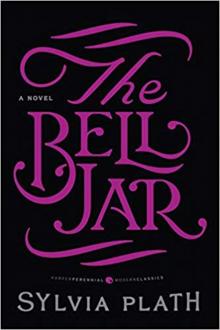 The Bell Jar
The Bell Jar Crossing the Water
Crossing the Water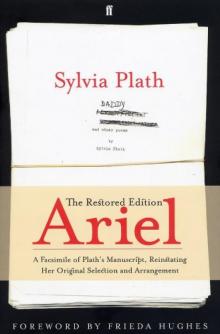 Ariel
Ariel The Colossus
The Colossus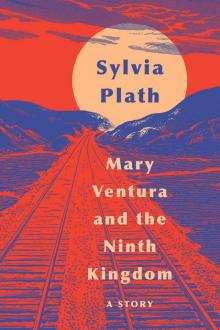 Mary Ventura and the Ninth Kingdom
Mary Ventura and the Ninth Kingdom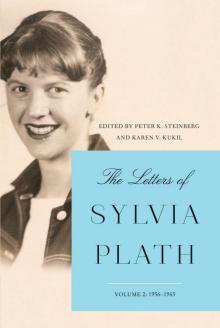 The Letters of Sylvia Plath Vol 2
The Letters of Sylvia Plath Vol 2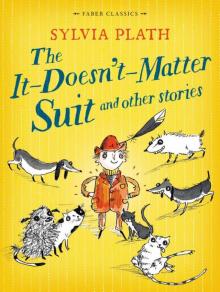 The It Doesn't Matter Suit and Other Stories
The It Doesn't Matter Suit and Other Stories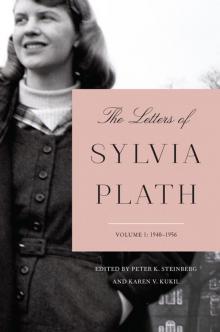 The Letters of Sylvia Plath Volume 1
The Letters of Sylvia Plath Volume 1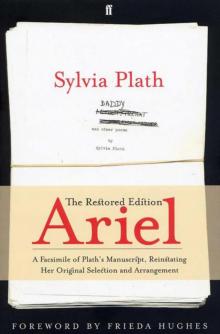 Ariel: The Restored Edition
Ariel: The Restored Edition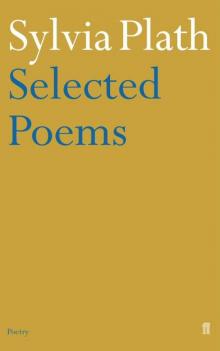 Selected Poems of Sylvia Plath
Selected Poems of Sylvia Plath